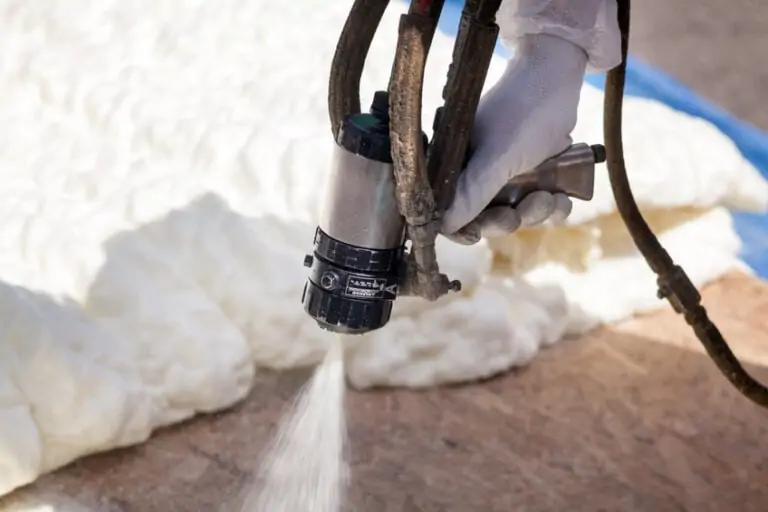Every homeowner wants a cozy, comfortable home. And every homeowner wants the ability to maintain that comfort at a reasonable cost. That’s why all building codes require minimum insulation R-values for specific climate zones. These days there are a handful of insulation applications that meet these R-values, but the frontrunner in energy efficiency is the use of spray polyurethane foam (SPF).
In fact, there’s a lot more to insulation than its R-value. The R-values refer to the “K-factor” of a material. The K factor is the thermal conductivity for a unit thickness of material. However, other factors also affect the thermal performance of roof and insulation systems. These other factors include thermal drift, thermal gaps created by mechanical fasteners, poorly installed decking, and the effects of air movement on energy usage and moisture retention in roofs. Because an insulation material’s R-value represents dry materials that are not affected by airflow or moisture, it doesn’t take into account the other aspects of energy performance. For example, fiberglass batt insulation may be rated with an adequate R-value, but as the material retains moisture it loses its insulating qualities. In a “real world” environment, you can expect as much as a 30-percent reduction of labeled R-value for thermal insulation materials that are permeable to moisture.
The physical properties of SPF insulation protects against this problem. Furthermore, the liquid application of the spray foam requires no fasteners, which means no thermal breaks at the fastener locations.
The bottom line is this: Spray foam insulation addresses R-values, airflow and moisture resistance better than other types of insulation. The result is a savings of up to 60 percent in heating and cooling costs.
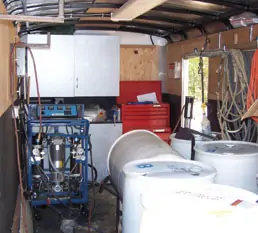
A Better Thermal Envelope
SPF roofing systems have been around for more than 40 years, but there is still a significant lack of knowledge among consumers, as well as many roofing professionals on how to install or maintain these systems.
Although the initial cost of installation could be 3 to 4 times the cost of installing standard fiberglass batts, in as few as five years the homeowner can recoup their investment and enjoy lowered utility bills throughout the life of the house. The rigid foam insulation, which is sprayed as a liquid and immediately hardens in place, does not settle or sag over time, losing its R-value like fiberglass or cellulose. SPF also has no food value to attract insects or rodents.
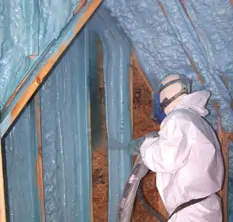
SPF can expand to about 100 times its original volume to fill air gaps between the framing studs in the walls and attic. By conforming to cavity shapes and sealing around wall features, SPF reduces air infiltration much better than standard fiberglass batts or reflective barriers. That’s a big benefit, considering that government energy reports estimate 40 to 50 percent of a home’s heating and cooling loss results from air flowing through the building envelope. Spray foam insulation is also non-toxic and usually has a lifetime guarantee. And, as the house expands and contracts over time, so does the foam insulation. This eliminates cracks and spaces for warm air to escape.
“Spray foam is also helpful for people who suffer from allergies,” says installer Ron Brown, explaining that the seamless and monolithic layer of insulation provides superb air quality and pathogen growth. Unlike traditional roofing systems that require vents in the attic, SPF systems utilize unvented attics. This results in conditioned attic space because the air-impermeable insulation acts as a barrier to prevent moisture condensation on the underside of roof decks. Vented attics minimize condensation by allowing the escape of moisture to the exterior by air flow. But with this airflow come outdoor allergens and pollutants—a non-issue with an unvented attic in an SPF system.
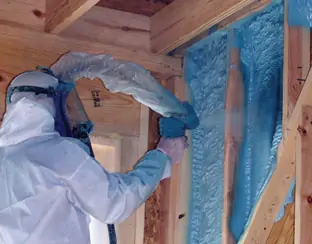
Which Spray Foam is Right for You?
The two most commonly used spray foam products are low-density, open-cell SPF (nominally referred to as “1/2 pound”) and medium-density, closed-cell foam (“2 pound”). Foametix offers both types of SPF, dubbed Blue Max 050 Open-cell and Blue Max 200 Closed-cell.
Low-density, open-cell SPF refers to a generic SPF that weighs between 0.4 to 0.6 pounds per cubic foot when fully cured. When sprayed to a substrate it expands about 100-150 times its original volume to form a semi-rigid/flexible, non-structural SPF insulation. The SPF has an R-value around 3.5 per inch.
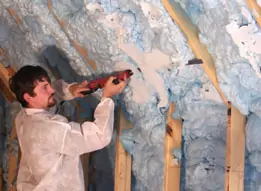
Medium-density, closed-cell refers to a generic SPF that weighs between 1.5 to 2 pounds per cubic foot when fully cured. When sprayed it expands about 35 to 50 times its original volume to form a rigid, structural SPF insulation with a compressive strength between 15 to 25 PSI. The SPF has an R-value of around 6.0 per inch (aged R-value).
The 1/2-pound insulation is widely used in interior walls and attic spaces for its acoustic properties. Installers recommend closed-cell foam for exterior walls and crawlspaces, because of its ability to resist moisture and its superior insulating properties. Additionally, closed-cell foam doubles the rack loads on walls and adds structural integrity. Both products are excellent air barriers, provide great insulation, and can help control condensation within the building envelope. However, the closed-cell foam is simply a better insulation, period. In a whole house system, there is a need for both products.
For more information on sprayed foam insulation, visit www.sprayfoam.org
SPF FAQ’s
Is SPF a good soundproofing material?
Both open- and closed-cell SPF effectively reduce noise from outside sources by sealing cracks and gaps that allow sound to travel through the walls, floors and ceiling into the building. They are less effective against noise caused by vibration.
How Long does a sprayed polyurethane foam roof last?
The oldest performing SPF roofs are more than 30 years old. Because the physical properties of the SPF change little with age, how long the SPF roof system lasts depends primarily on the original application and long-term maintenance.
How do you maintain SPF roof insulation?
SPF roof systems should be inspected semi-annually and after events that could cause physical damage. Small (less than 3-inch diameter) dents, cracks, punctures from dropped tools, wind-driven debris can be repaired with an elastomeric sealant compatible with the SPF and coating system. More extensive damage can be repaired by reapplying SPF. Typically, SPF roof systems are re-coated every 10 to 15 years, dpending ont he typed and thickness of cotaing used and factors specific to the roof (such as wind erosion effects, hail, foot traffic, abuse, etc.). Recoating extends the service life of the SPF roof system.
–Source: Spray Polyurethane Foam Alliance,


